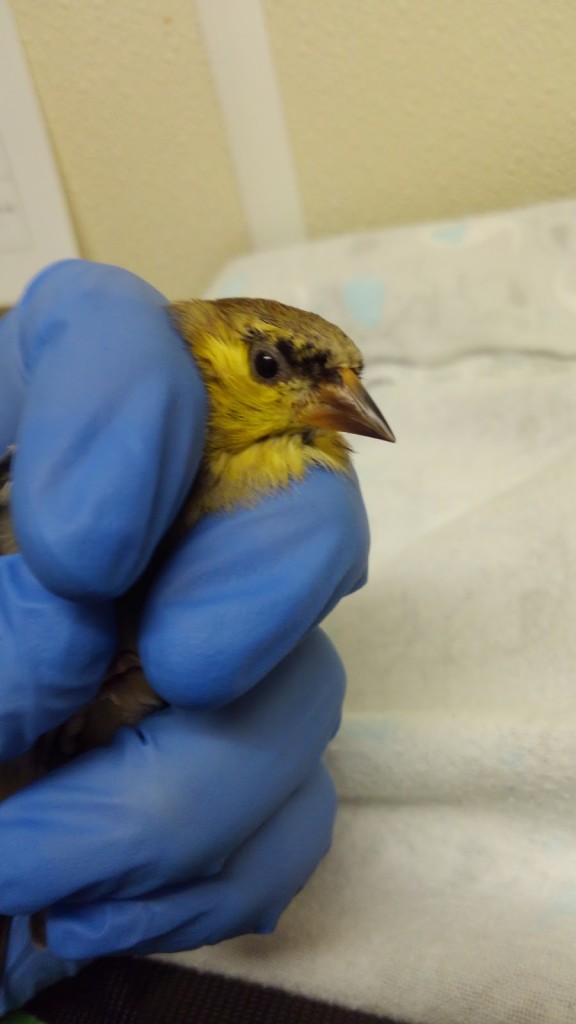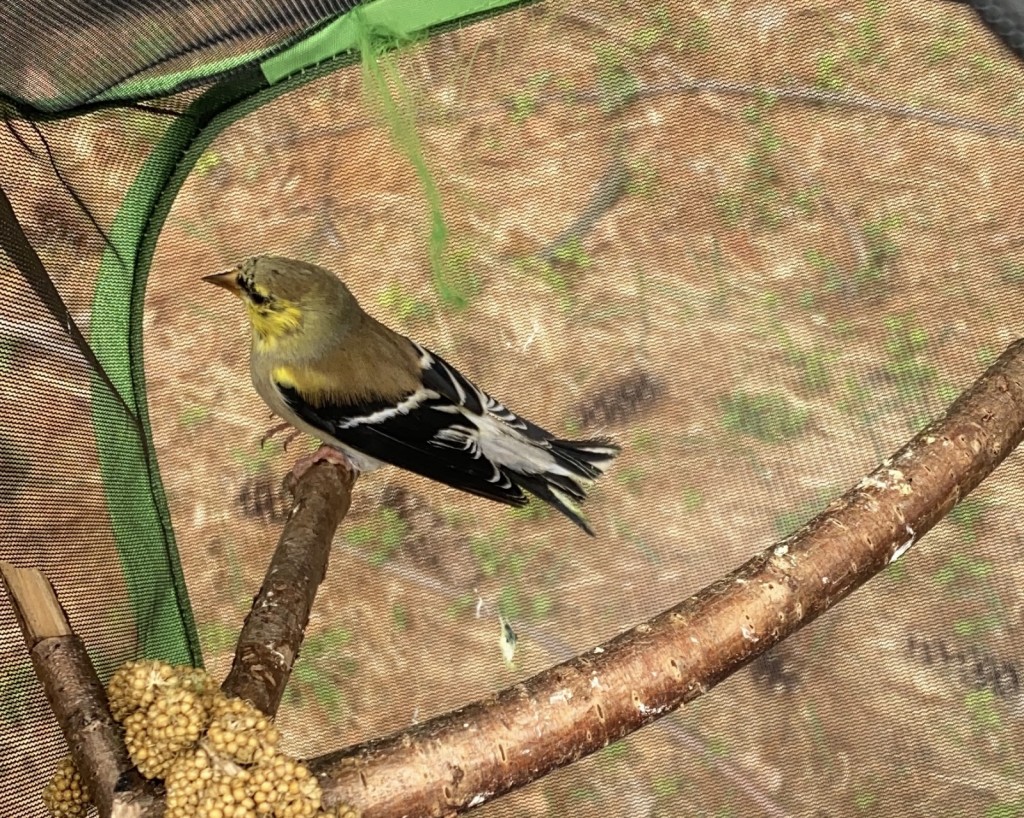
Wildlife rehabilitators are well aware of the potential for disease transmission between humans and wildlife as well as between individual animals- it is a calculated risk we take in the course of our daily work.
For example, we routinely practice isolation and quarantine in the wildlife clinic when we admit an animal with a contagious disease such as finch conjunctivitis, as was the case with this female American goldfinch. She arrived in early March with both her eyes so swollen and crusted she could hardly see. She needed to be isolated from all our other patients, and we changed gloves every time we treated her or cleaned her cage, and sanitized everything she came in contact with. Since she had to be isolated, we provided as much environmental enrichment for her as we could to keep her stress-free while she recovered. After three weeks of daily treatment, she was in excellent condition and was released in the same area she was originally found. [pullquote]We routinely practice isolation and quarantine in the wildlife clinic when we admit an animal with a contagious disease.[/pullquote]
Finch conjunctivitis can be transferred by direct contact and from contaminated surfaces. You can help prevent the spread of this disease in wild birds by making sure your bird feeders are properly cleaned; discard old, wet or moldy seed, wash feeders with hot soapy water once a week and sanitize with a 10% bleach solution to help keep your backyard birds healthy.

